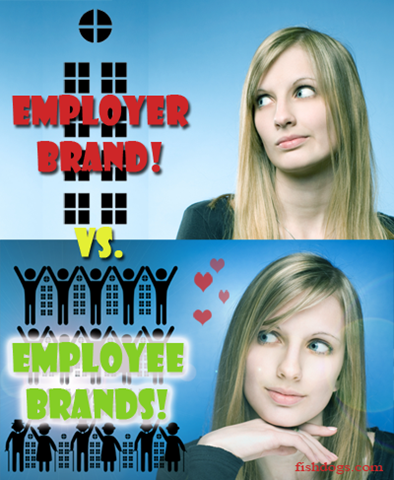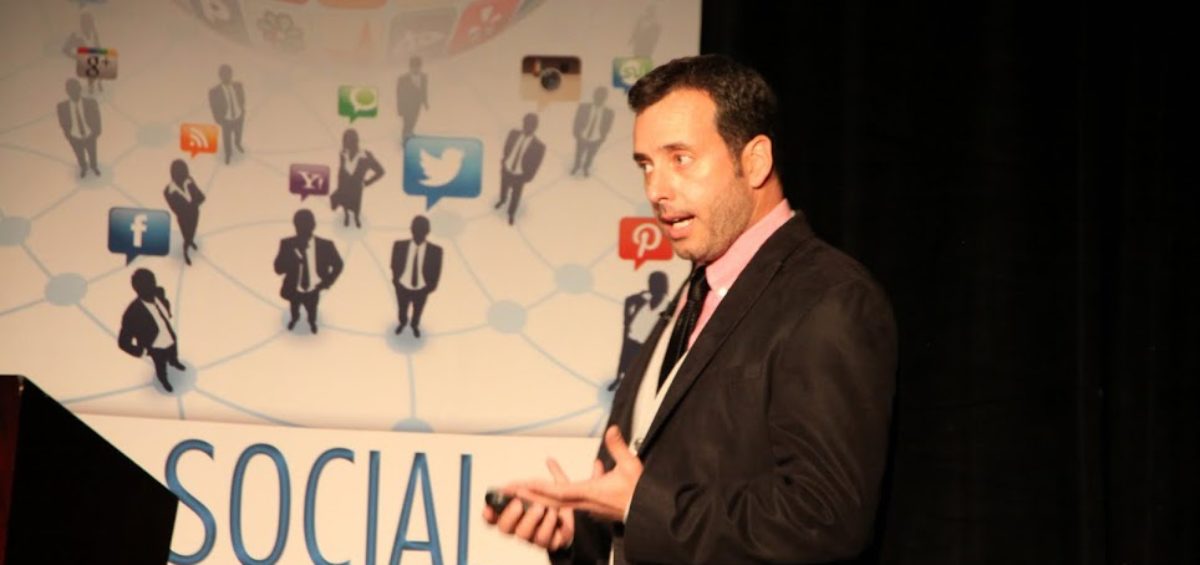It’s called many things: employer or employment branding, recruitment marketing, talent attraction, talent marketing, etc. It’s a largely misunderstood thing that is really just about what your company looks like as a prospective employer to job seekers.
Wikipedia describes Employer Branding like this:
Employer brand was first used in the early 1990s to denote an organisation’s reputation as an employer.[1] Since then, it has become widely adopted by the global management community.[2][3][4] Minchington (2005) defines employer brand as “the image of your organisation as a ‘great place to work’”. Employer branding is creating this image.[5]
Just as a customer brand proposition is used to define a product or service offer, an employee value proposition (EVP) is used to define an organisation’s employment offer. Likewise the marketing disciplines associated with branding and brand management have been increasingly applied by the human resources and talent management community to attract, engage and retain talented candidates and employees, in the same way that marketing applies such tools to attracting and retaining clients, customers and consumers.
 That sounds like messaging and image management. I got a similar feel from a nice post I read today on ERE.net, Unearthing Employment Brand by Matt Lowney. In it, Matt said that, after years of wondering what all the fuss was about with employer branding, he now gets it since he has moved into a talent leadership role at an ad agency.
That sounds like messaging and image management. I got a similar feel from a nice post I read today on ERE.net, Unearthing Employment Brand by Matt Lowney. In it, Matt said that, after years of wondering what all the fuss was about with employer branding, he now gets it since he has moved into a talent leadership role at an ad agency.
Here is my perspective. It is based on working with major employer brands like Zappos, JCPenney, Yum Brands, Linkedin, and more, on social recruitment strategy and branding practices. It comes from getting to see, up close and personal, how these, and other great brands like Rackspace and Pepsico are doing it. I have done the job advertising side of it. Creative writing and strategic placement of job postings for major corporations has been in my job description for a long time.
Employer brands should be about your people, not ads. Yes, you have to figure out where your audience (job seekers) hangs out online (in some cases offline). Yes, you need to know what appeals to them. But if you are really going to be authentic, your message should be focused on what appeals to your current employees about your company. And that message should be spread by your current employees as much as by your marketing and recruiting teams.
Think about it. If I am a savvy job seeker, I can easily find, on your company’s web site, careers page, or job posting, what you want me to know about your company. But I am going to dig deeper than that. I’m going to Google your company to see who works there and review what they say online about working there. I’m going to look on Linkedin to see what employees and executives do at your company, and how they describe their job. I am going to attempt to network with your employees for either inside scoop or an inside track on the job and company. And I’m going to get a feel for the culture beyond what your brand message is. I want to work with people I like, or with whom I fit.
Employer brand is about employee brands. Here are my top 5 ways to think beyond employer branding. Ask these things about your company:
- How do your employees and executives appear on Google and Linkedin to a potential job seeker or customer doing research?
- Can you feel what it’s like to work at your company from what your employees say online?
- Are your employees’ online profiles and activities brand positive, brand negative, or brand neutral?
- Have you given your employees the tools to help them carry the authentic employer brand to market if they so choose?
- Is your company helping to tell your employees’ stories? Or is it just presenting a brand message?
For most companies, there is only one employer brand, but many employees. And your employees, in large part, all have a story online that the average Joe researching your company can see.
For more about how employers can empower employees on social channels, check out this post I wrote for Universum Quarterly back in March of 2009, Organic Branding for Employers. And there are plenty more resources here http://blog.fishdogs.com/search?q=employer+branding
Everyone in your company makes the employer brand. It’s not about the ads.












Charles, thx for the thoughts. You nailed it. Engaging employees is the grand side effect.
Companies should really start rolling out employee branding as a major part of their marketing tactic. It makes employees think that management really considers their presence as an integral part of the company's brand as a whole.
Great post Craig! I wholeheartedly agree with you that employer branding can be complicated.
It also can have many different meanings, which you terrifically point out and which I touch on in my post: What Does Employer Branding Mean to You? http://www.hirebranding.net/2012/01/what-does-employment-branding-mean-to-you/
Thanks for sharing your employer branding insights Craig!
Rob, I need some recent stats on first year attrition being effected by engagement. Do you have any?
Fantastic article, Craig.
I love how you brought focus back to your "Existing employees" for two reasons: 1) your existing employees have to be part of your branding, if they don't believe it, it's a lost cause, and 2) your existing employees also need reinforcement of what they have, why it's great to work at company X…
The "unintended" consequences of this: 1) Increased engagement (existing employees are bought in), 2) lower first-year attrition (if your messaging/branding is true to the company's culture and benefits and 3) increased internal mobility (employees rather find ways to stay at existing company then leave).